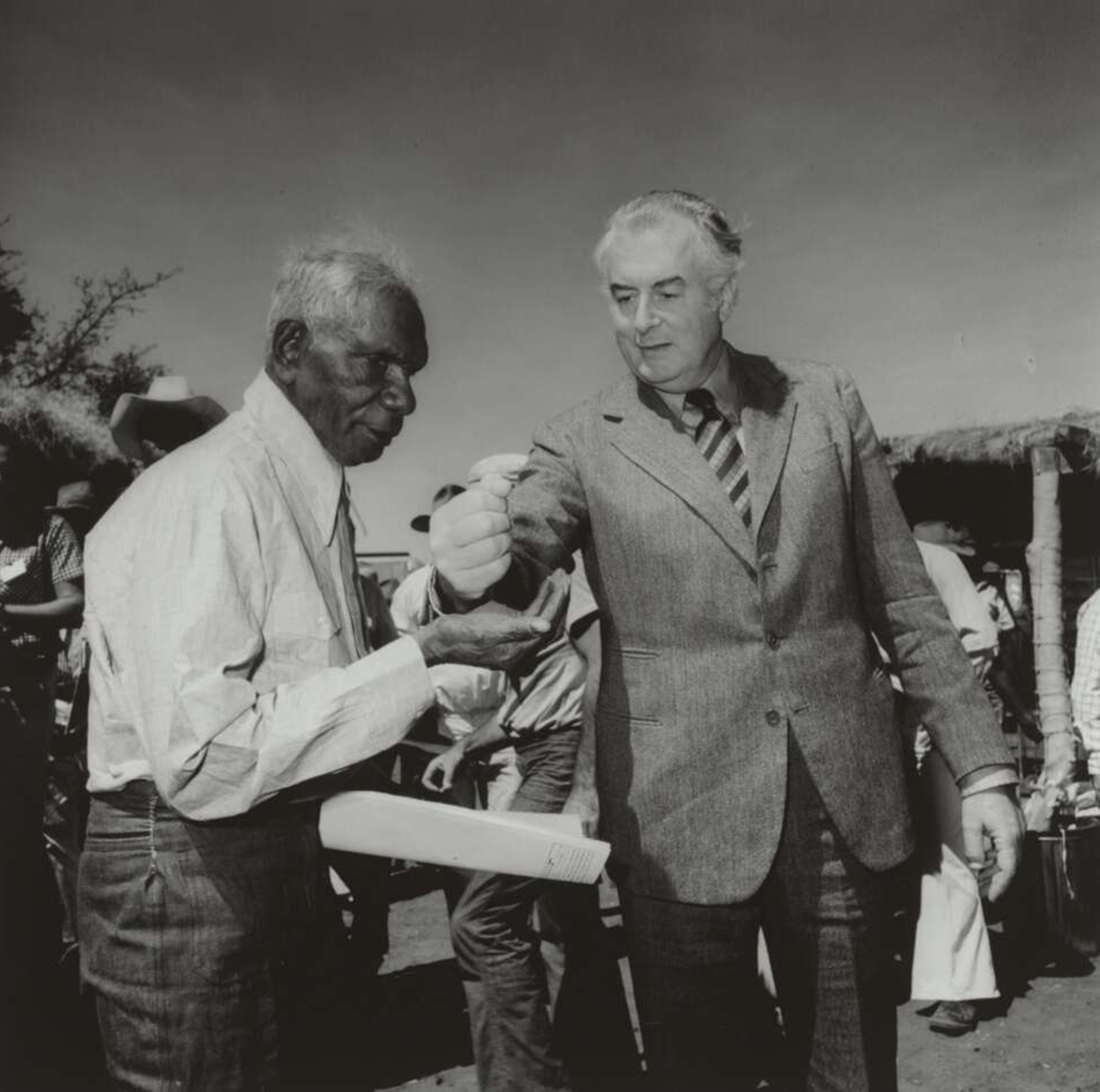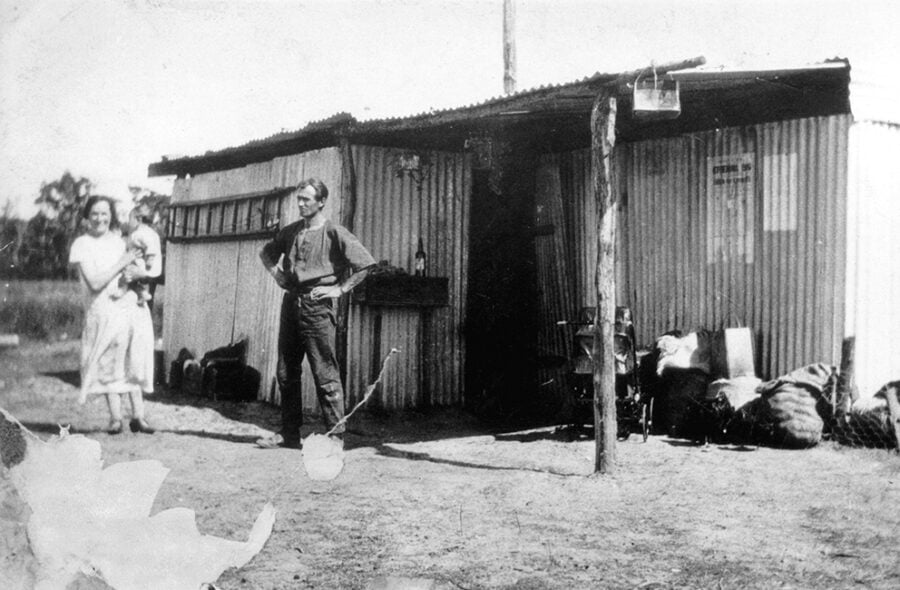Defining Moments in Australian History: Wave Hill walk-off

Members of Aboriginal communities are warned this story may contain images and names of deceased people.
The Gurindji had lived in what is now the Victoria River area of the NT for tens of thousands of years, when in 1883 the colonial government granted almost 3000sq.km of their country to the pastoralist Nathaniel Buchanan. In 1884, 1000 cattle were moved onto the land and 10 years later there were 15,000 cattle and 8000 bullocks.
This pattern was repeated across Australia as pastoralists took possession of Aboriginal lands and stocked them with cattle and sheep.
Traditional ways of life came under intense pressure. Aboriginal people generally wanted to remain on their land, which played into the hands of pastoralists because the stations required cheap labour, and over the next 70 years Aboriginal people became an intrinsic but exploited part of the cattle industry across Australia.
From 1913, legislation required that, in return for their work, Aboriginal people in the NT should receive food, clothing, tea and tobacco. However, in 1946 a report revealed that Aboriginal children under the age of 12 were working illegally, accommodation and rations were inadequate and there was sexual abuse of Aboriginal women.
In 1953 all Aboriginal people in the NT were made wards of the state, and in 1959, the Wards Employment Regulations set out a scale of wages, rations and conditions applicable to wards employed in various industries. However, the ward rates were up to 50 per cent lower than those of Europeans employed in similar occupations and some companies refused to pay their Aboriginal labourers anything at all.
In 1965 the North Australian Workers Union, under pressure from the NT Council for Aboriginal Rights, applied to the Commonwealth Conciliation and Arbitration Commission to delete discriminatory references in the pastoral award. The Commission agreed to increase wages but deferred implementation of its ruling by three years, a process that saved pastoralists an estimated $6 million.

The Buchanans had sold Wave Hill to Vestey Brothers (an international meat-packing company) in 1914. The deferment of the Commission’s ruling and the refusal of Vestey Brothers to pay wages to Aboriginal workers led to heated discussions. In 1966 negotiations stalled and on 23 August the Gurindji community, led by Vincent Lingiari, walked off the station.
In April 1967 the Gurindji moved their camp 20km to Daguragu (Wattie Creek). This was a symbolic shift away from the cattle station and closer to the community’s sacred sites. They were focused on reclaiming their land, but unionists who supported their strike believed the dispute was solely about wages and work conditions.
Shortly afterwards, the Gurindji petitioned governor-general Lord Casey to grant a lease of 1300sq.km around Daguragu to be run cooperatively by them as a mining and cattle lease, stating, “We feel that morally the land is ours and should be returned to us.” Lord Casey, however, refused.
The Gurindji stayed at Daguragu, even though under Australian law they were illegally occupying a portion of the 15,000sq.km leased to Vestey Brothers. Over the next seven years petitions and requests moved back and forth between the Gurindji, the NT Administration and the government in Canberra, but nothing was resolved.
After the 1972 Labor victory, Gough Whitlam announced that his government would “establish once and for all Aborigines’ rights to land”. In March 1973, the original Wave Hill lease was surrendered and two new leases were issued: one to the traditional owners through their Murramulla Gurindji Company and another to Vestey Brothers.
In August 1975, Whitlam came to Daguragu and ceremonially returned a small portion of Gurindji land to the traditional owners by pouring a handful of soil into Lingiari’s hand. The strike was a catalyst for the passing of the Aboriginal Land Rights (Northern Territory) Act 1976, the first legislation allowing for a claim of title if the Indigenous claimants could provide evidence of their traditional relationship to the land.
‘Wave Hill walk-off’ forms part of the National Museum of Australia’s Defining Moments in Australian History project.




